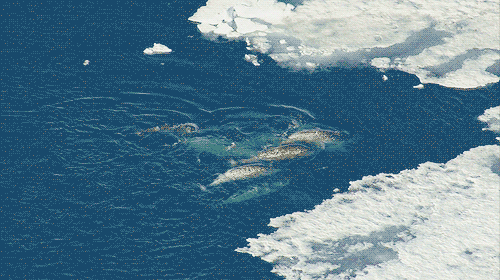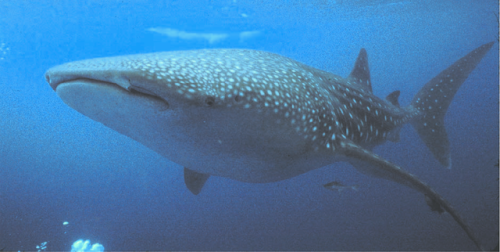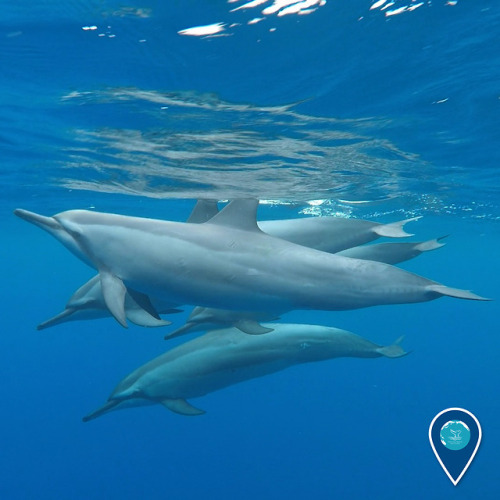Simplyphytoplankton - Simply Phytoplankton



More Posts from Simplyphytoplankton and Others
Adjustments to a different educational landscape
Different systems
Less work
Difficulties
I thought it would be appropriate to write about the different educational landscape after taking my first round of exams for a number of reasons. First, it gives me enough time to adjust (kind of) to the different system, and secondly, it gives me a bit of time to reflect on the system as well.
I'll begin with a brief description outlining different education system. First, most students do not live on campus. Some may live two or three hours away too, which makes me feel awkward when I say I live on campus because the two hour is too long to do two times every day. Second, most classes are only once a week, which can make it easy to forget about work and procrastinate. In fact, my only class that is two times a week is my Spanish class taught by a professor with IFSA-Butler.
In my classes, there is a lot less "busy work," which is bitter sweet for me since busy work helps me stay on top of content but at the same time reduces free time. This also translate into less exams. In each of my three classes that have exams, there are only two. There is a lot of group work, usually including presentations, but in one of my biology labs, it means a lot of lab/field work. In the same course, called Evaluation of Habitat, we had two weekend trips (one to a refuge and one to a biological reserve) to complete small, independent projects.
Adjusting to this new academic system is difficult, especially with the language barrier. I also think that since there fewer numbers of classes every week, it is a lot harder to get a feel for each professor. It is difficult for me to point to few particular skills that I gained during my first year of college that I have used here because for me, I always need to experience it for myself and then I find my footing. It is hard to do it quickly, but I think that the best way for me to make the transition is to simply immerse myself in the system and my work.
IFSA-Butler's main role, especially during orientation, was giving advice to all of us and letting us know that they are there to provide support to us, including offering free tutoring to anyone who wanted it.

FROM PANAMA TO MARIANA TRENCH: FEMALE WHALE SHARK MADE A RECORD!
For two and a half years, scientists followed the movements of Anne, a whale shark, during which she swam from the coast of Central America to the Mariana Trench.
In 2011, researchers put a transmitter on Anne near Coiba Island in Panama. In the following 841 days, Anne’s transmitter sent a signal to the ARGOS satellite when it swam close to the surface. These trasmitter allowed the team to follow its movements to the south to the Galapagos Islands and throughout the Pacific to the Mariana Trench, to the south of Japan and the east of the Philippines. She traveled a distance of 20142 kilometers.

-Whale shark route from Panama to the Mariana Islands (black track) tagged in September 2011, and old record from Mexico to the Marshall Islands (red track, tagged in September 1995).
The finding reinforces the position of the whale shark as one of the animals that travels most, along with leatherback turtle, gray whale and the arctic tern. In 2016, the IUCN cataloged the species for the first time as threatened. Biologists calculate that tropical and subtropical seas have less than half of whale sharks that they had 75 years ago, which increases the urgency of their protection.
Read also: This is why whale shark aggregate just in 20 sites!
Photo: A whale shark at Gladden Spit, Belize. Source Heyman et al.,2001.
Reference (Open Access): Guzman et al., 2018. Longest recorded trans-Pacific migration of a whale shark (Rhincodon typus). Marine Records

March is Dolphin Awareness Month, and here at Sanctuaries, we love our dolphins!
Dr. Nancy Foster Scholar Alexandra Avila photographed these Hawaiian spinner dolphins in Hawaiian Islands Humpback Whale National Marine Sanctuary. Spinner dolphins are incredibly gregarious, sometimes gathering in groups of several hundred or more! These dolphins feed at night and return to coastal waters to rest and socialize. Because they rest during the day, it’s important to give them lots of space – would you like someone trying to hang out with you when you’re trying to get some shut-eye?
(Photo: Alexandra Avila)


What a Nut!— Invasive Species Week
This ctenophore (a stingless jellyfish-like animal) called a sea walnut is native to the east coast of North and South America. In 1982, it was discovered in the Black Sea, where it was transported by ballast water. It subsequently spread to the Caspian Sea. In both places, it multiplied and formed immense populations. The sea walnuts contributed to the collapse of local fisheries because they feed on zooplankton that the commercial fish also consume. Mnemiopsis leidy has also been discovered in the Mediterranean, Baltic, and North Seas.
Photo Credit: Marco Faasse, World Register of Marine Species

This would be so terrifying


🗽click here for more🗽
🗼also follow us on insta!🗼
Meet “the sheep of the Mesozoic,” Protoceratops andrewsi. This herbivore was a very common animal and is remarkably well-represented in the fossil record.
-
 stayred73 liked this · 3 months ago
stayred73 liked this · 3 months ago -
 mcflies reblogged this · 7 months ago
mcflies reblogged this · 7 months ago -
 powerpopeye liked this · 8 months ago
powerpopeye liked this · 8 months ago -
 samt-for-prfm reblogged this · 8 months ago
samt-for-prfm reblogged this · 8 months ago -
 samantha-dan564 liked this · 8 months ago
samantha-dan564 liked this · 8 months ago -
 gousouskmz reblogged this · 9 months ago
gousouskmz reblogged this · 9 months ago -
 tackan0617 reblogged this · 9 months ago
tackan0617 reblogged this · 9 months ago -
 gerbilmongolski reblogged this · 10 months ago
gerbilmongolski reblogged this · 10 months ago -
 sexypantywife liked this · 10 months ago
sexypantywife liked this · 10 months ago -
 blukiwi reblogged this · 1 year ago
blukiwi reblogged this · 1 year ago -
 pardon-my-obsessive-tendencies reblogged this · 1 year ago
pardon-my-obsessive-tendencies reblogged this · 1 year ago -
 quotefromthatshow reblogged this · 1 year ago
quotefromthatshow reblogged this · 1 year ago -
 breakingjen reblogged this · 1 year ago
breakingjen reblogged this · 1 year ago -
 esquizo3214378 reblogged this · 1 year ago
esquizo3214378 reblogged this · 1 year ago -
 esquizo3214378 liked this · 1 year ago
esquizo3214378 liked this · 1 year ago -
 netodee reblogged this · 1 year ago
netodee reblogged this · 1 year ago -
 tackan0617 reblogged this · 1 year ago
tackan0617 reblogged this · 1 year ago -
 llasagna reblogged this · 1 year ago
llasagna reblogged this · 1 year ago -
 katsuwojp reblogged this · 1 year ago
katsuwojp reblogged this · 1 year ago -
 meganecamera liked this · 1 year ago
meganecamera liked this · 1 year ago -
 ohnoesnotagain liked this · 1 year ago
ohnoesnotagain liked this · 1 year ago -
 daneonrainbow reblogged this · 1 year ago
daneonrainbow reblogged this · 1 year ago -
 daneonrainbow liked this · 1 year ago
daneonrainbow liked this · 1 year ago -
 glitchven liked this · 1 year ago
glitchven liked this · 1 year ago -
 alunafort reblogged this · 1 year ago
alunafort reblogged this · 1 year ago -
 agj1993 reblogged this · 1 year ago
agj1993 reblogged this · 1 year ago -
 agj1993 liked this · 1 year ago
agj1993 liked this · 1 year ago -
 minimal23 liked this · 1 year ago
minimal23 liked this · 1 year ago -
 kingfishersays reblogged this · 1 year ago
kingfishersays reblogged this · 1 year ago -
 gogogoat495 liked this · 1 year ago
gogogoat495 liked this · 1 year ago -
 serpencexalloid reblogged this · 1 year ago
serpencexalloid reblogged this · 1 year ago -
 ilovebricks reblogged this · 1 year ago
ilovebricks reblogged this · 1 year ago -
 mrbigandbeefy liked this · 1 year ago
mrbigandbeefy liked this · 1 year ago -
 nutcasewithaknife reblogged this · 1 year ago
nutcasewithaknife reblogged this · 1 year ago -
 nutcasewithaknife liked this · 1 year ago
nutcasewithaknife liked this · 1 year ago

Blog dedicted to phytoplankton. Phytoplankton are microscopic organisms that are responsible for half of the photosynthesis that occurs on Earth. Oh, and they look like art... Follow to learn more about these amazing litter critters! Caution: Will share other ocean science posts!Run by an oceanographer and phytoplankton expert. Currently a postdoctoral researcher.Profile image: False Colored SEM image of Emiliania huxleyi, a coccolithophore, and the subject of my doctoral work. Credit: Steve Gschmeissner/ Science Photo Library/ Getty ImagesHeader image: Satellite image of a phytoplankton bloom off the Alaskan Coast, in the Chukchi SeaCredit: NASA image by Norman Kuring/NASA's Ocean Color Web https://earthobservatory.nasa.gov/images/92412/churning-in-the-chukchi-sea
158 posts
